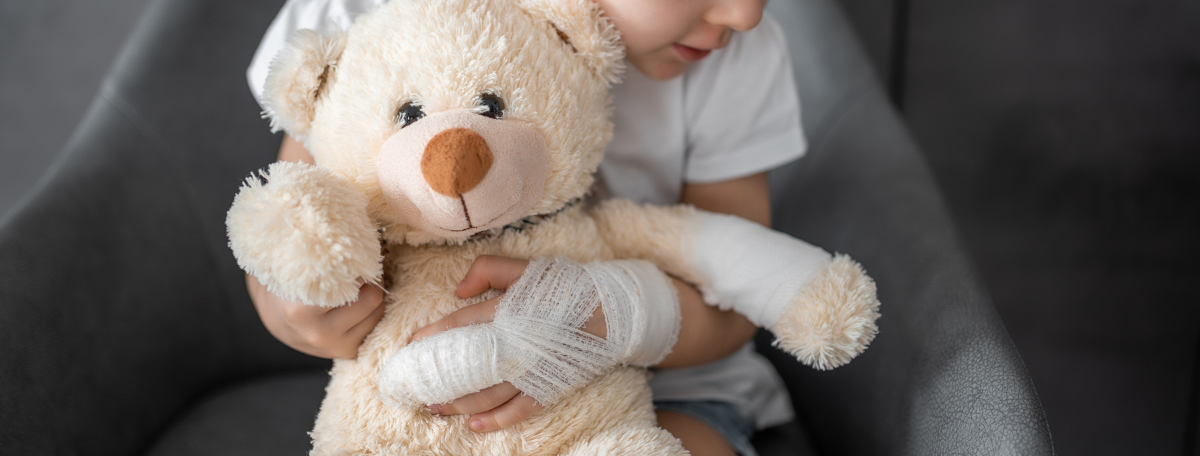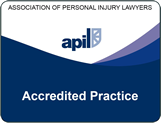As a parent, your top priority is your child’s safety and well-being. But what happens if they are involved in an accident? If your child is injured due to the negligent acts of another person, you may be able to claim compensation on their behalf. The process of making a child personal injury claim can be confusing and at times challenging, therefore it is important that parents understand the steps that need to be taken in order to make your child personal injury claim a success.
In the UK, we recognise that children do not always hold the ability to make weighted decisions or take responsibility for their actions. And so, the legal system is structured to protect children and their rights, ensuring they are awarded sufficient compensation if they become seriously injured.
A claimant within any child personal injury claim, is someone who at the time of their accident is under the age of 18 and is seeking compensation for injuries or losses they have sustained from the negligent acts of a third party. Due to their age, in order to claim compensation a child personal injury claim must be raised by either a parent or legal guardian of the child.
My child has been injured in an accident, what next?
Experiencing an injury to a child can be an incredibly distressing situation for any parent. Amidst the panic and concern, it can be challenging to maintain focus. However, we have put together a list of three crucial actions you can take at the scene of an accident to assist your child and positively impact the potential outcome of their personal injury claim.
Step 1: Seek Medical Attention
First and foremost you must make sure that your child receives the medical attention they need. Not only will treatment be crucial for pain relief and recovery, but the medical notes taken from GP and hospital visits will document the extent of the injuries as well as the accident circumstances, which can be used as evidence to support a child personal injury claim.
Step 2: Collate Evidence
Evidence is a fundamental factor in each and every legal case. When it comes to a child personal injury claim, you must provide evidence that the accident and consequential injuries were caused by someone else’s negligence. Evidence can be provided in the form of photographs, video footage, medical reports, witness statements and any other documentation that can prove liability.
Step 3: Enlist the Help of a Personal Injury Solicitor
If your child is involved in an accident, naturally as a parent or guardian you may feel very stressed and overwhelmed in the aftermath. Personal injury solicitors are no strangers to child personal injury claims and can provide guidance and support when you most need it. A solicitor will manage all legal matters and ensure you are updated on any progress, making the process as stress-free as possible for you.
What to Consider Before Making a Child Personal Injury Claim
Prior to making a child personal injury claim, there are a couple of things worth thinking about:
Time Limit
For the majority of personal injury claims, the injured party has three years from the date of their accident to make their claim. However, this does not apply to children. If a person under the age of 18 has been injured in an accident that wasn’t their fault, they have until their 21st birthday to make a claim, as the three year statute of limitations will begin on their 18th birthday.
It is important to note that this is not the case in all child personal injury claims, as there are certain accidents such as those that occur on planes, boats or involve untraced drivers, which follow a different set of rules and have a shorter limitation date (currently 2 years after the accident).
In any event it is always best to make your claim sooner rather than later, particularly when considering evidence. In time, the accident site will be cleared, a child’s recollection of the event may fade and potential key witnesses could move or pass away.
Representation
As a parent or legal guardian, you have the right to represent your child within their personal injury claim, a role we refer to as a ‘litigation friend’. A litigation friend has the authority to make decisions on a claimant’s behalf, therefore it is crucial that the person chosen for this responsibility, has the child’s best interests at heart.
If for example a parent was involved in the accident which caused the injuries, it may be a conflict of interest for this parent to act as the litigation friend of their child.
How Stonehewer Moss Solicitors Can Help You
Stonehewer Moss are a team of APIL (Association of Personal Injury Solicitors) accredited Personal Injury solicitors, dedicated to obtaining the maximum compensation for our clients. We provide free, no-obligation advice, and independent legal representation on a No Win, No Fee basis, eliminating any risk to you.
We are aware that pursuing an injury claim can be stressful and unsettling. Our goal is to simplify the legal process for you and make it as easy as possible. We work hard to secure private medical treatment and rehabilitation when required and seek reimbursement for any losses you may have incurred.
For further information on No Win No Fee agreements, watch this short video to learn more.
Talk to one of our personal injury claims specialists
Call us on freephone 0800 434 6544 or 01606 87 22 00


